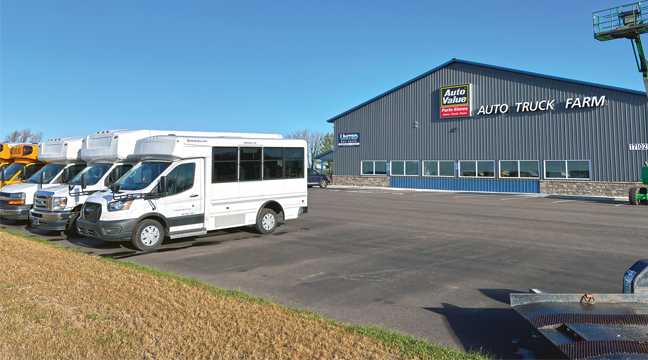Sand Dunes State Forest residents, forest users and DNR officials held another go-around Monday at BLHS, refining details of the DNR’s remaining five year management plan for the forest.
They are working on the last five years of a plan started in 2013 and running to 2022. With the Sand Dunes stakeholder group and Rep. Jim Newberger interceding, changes have been made to the plan.
DNR officials have called for a public hearing on the revised plan July 10 from 6 to 9 p.m. at BLHS. They will submit a final plan to their DNR commissioner this fall.
Intent of Monday’s two-hour session was to get feedback on four areas of the plan: 1) Vegetation (trees and other plantings); 2) Recreation; 3) School Trust Lands; and 4) Forest Roads.
With Rep. Newberger’s 2017 law incorporated into the plan, it read much friendlier to the locals. Newberger’s law does not cut back on tree harvesting, but it does protect residents’ interests in several critical areas;
1). The law does not allow conversion of additional land to oak savanna or convert oak savanna to non-forest land;
2). It requires all prairie seeds planted be from native species to Sherburne or Benton counties;
3). It requires the DNR comply with buffer guidelines for esthetics in residential areas;
4). Prescribed burn notification must be in local newspapers, with notification to the county and township in writing, and all residents within a quarter mile, also in writing;
5) That 233rd Avenue in Orrock Twp. must have its easement conveyed to the township.
Duration for this law is two years.
Public Feedback
A goodly share of the session dealt with the vegetation plan; most notably, the DNR’s intent in some cases to replace (convert) forest from its present pine to oak savanna.
Bob Quady, former DNR forester and member of the local group, questioned potential for such conversions to oak savanna.
“If you come here because of the conversion, this is a bad plan,” he said. “This is a negative for me. It goes away from specificity.”
He later asked DNR people why some stands of pine have not been left to mature over more years; rather, they have been cut down, leaving an option toward conversion.
Tall, mature, long-growing pines have been a way of life for the Sand Dunes people. That has been a most-crucial condition for them in forest management.
The DNR plan circulated to meeting-goers was composed of 86 pages, dealing with issues brought up at meetings stretching back to the summer of 2015.
Abundant, colored maps showed details of their forestry operations.
“I like the maps,” said Resident Ron Geurts.
“How about poison ivy, oak wilt?” asked Bob Hassett, Orrock Twp. supervisor.
“There is no plan for poison ivy,” said Regional Forestries Mgr. John Korzeniowski. “It is a native plant.”
“The vegetation,” said Quady. “The conversion plan goes backward. Areas are not zoned,” he said, meaning the DNR could change methods of replanting and vegetation.
Korzeniowski said in regard to a timber harvest of Norway pine near Co. Rd. 4, they will be replaced with red and white pine.
Quady followed: “The School Trust Lands pines should be grown to maturity,” he said. “For maximum profits.”
“There are no harvests prescribed (for those lands),” said a DNR official.
Recreation Plan
The recreation plan discussion drew comments from a number of horse owners, concerned their trails were going to be abandoned. Speaking were Katie Jones, Diane Monson and a third resident.
Jones said she was concerned to see “Closed” on one horse trail.
That sign didn’t refer to the horse people, one man said. “It only applies to a specific use group.”
“How do we get information from the DNR?” said Jones. She was instructed to give them her email address, so she will be added to the newsletter list.
The DNR said it has multi-uses for horse trails, especially as snowmobile trails for wintertime use - and for firebreaks, too. Those trails remain a high priority for the future.
There are many recreational uses of Sand Dunes State Forest, among them being camping, picnicking, horseback riding and hiking, snowmobile use, cross country skiing, cycling, hunting, wildlife viewing, boating, fishing and other water recreation.
The School Trust Land discussion was limited, but more input was received during the final segment - on township roads and the DNR.
Most of that was driven by the Orrock Twp. officials.
And “yes,” said the DNR people. They are committed to a transfer of easement on 233rd Avenue, and other roadways better serving the township.
“We’re committed to continue this,” said a DNR official at the end of the meeting. “This is not a one and done.”
Timber Harvests
From 2017-22, the DNR plans proposes 1,520 acres for harvest through thinning, another 679 acres for final harvest (clear cut) at rotation age (generally 70 years), 336 acres for habitat enhancement using burning, invasive species control and seeding; and 73 acres for selective tree removal.
Sand Dunes State Forest is comprised of 5,732 acres affected by the planning process.








